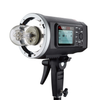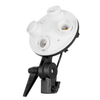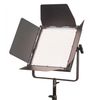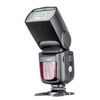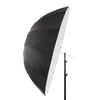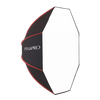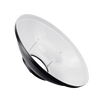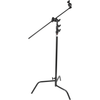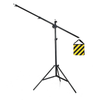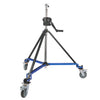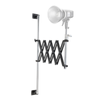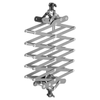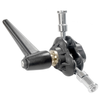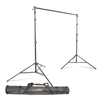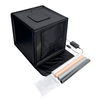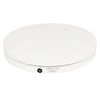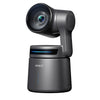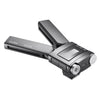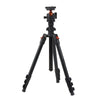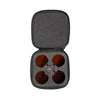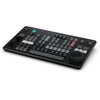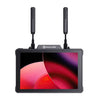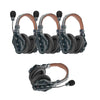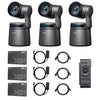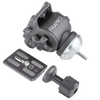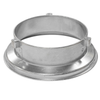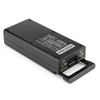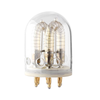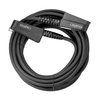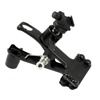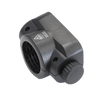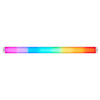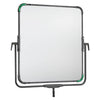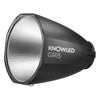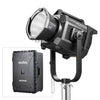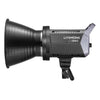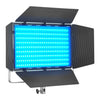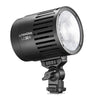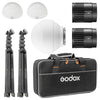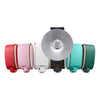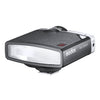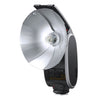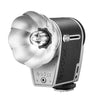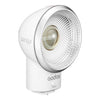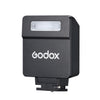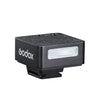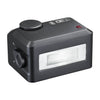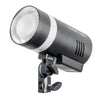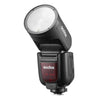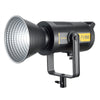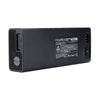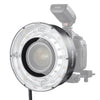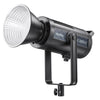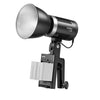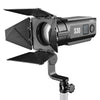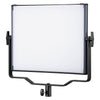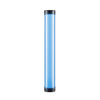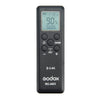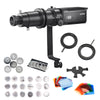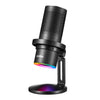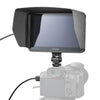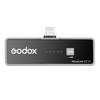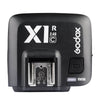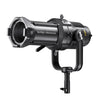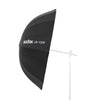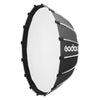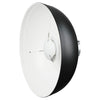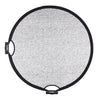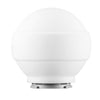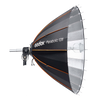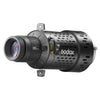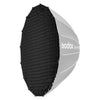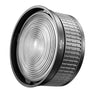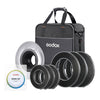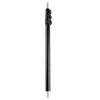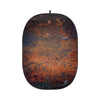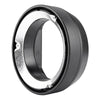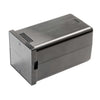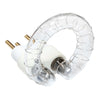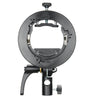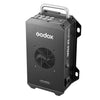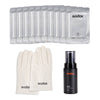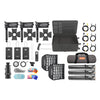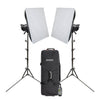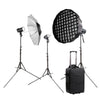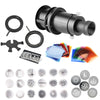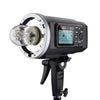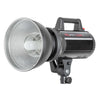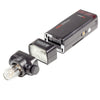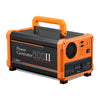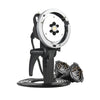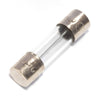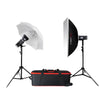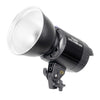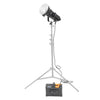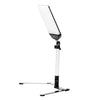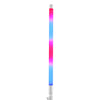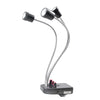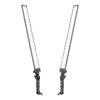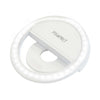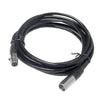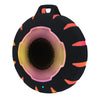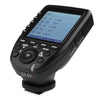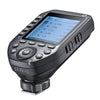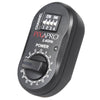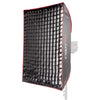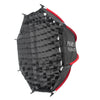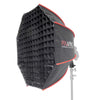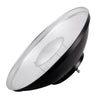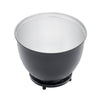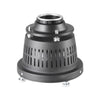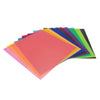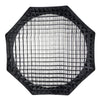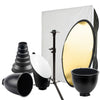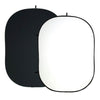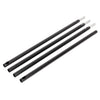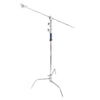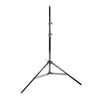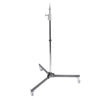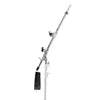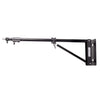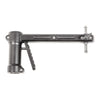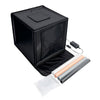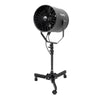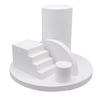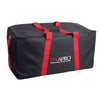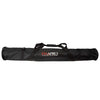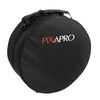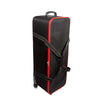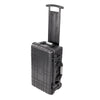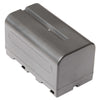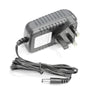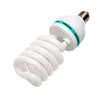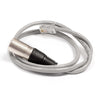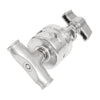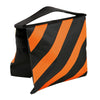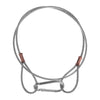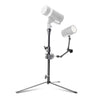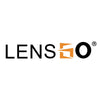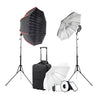Help & Support
How can we help? Contact us anytime via email or call us from 9:30am - 4:30pm, Mon-Fri GMT.
Glossary of Terms
A
Auto Focus Assist
Auto Focus Assist (AF Assist) is a feature that helps your camera’s autofocus system focus accurately in low light or low contrast conditions where it might struggle to lock focus.
Aperture
Aperture is the opening inside a camera lens that controls how much light enters the camera and hits the sensor (or film). A wide aperture means a bigger opening, allowing more light in. A narrow aperture means a smaller opening, allowing less light in.
Aspect Ratio
Aspect Ratio is defined as the ratio of the width to the height of a two-dimensional image, display screen, or video frame. It is expressed as two integers separated by a colon (e.g., W:H), where W represents the width and H represents the height. This ratio describes the proportional relationship between these dimensions, independent of their absolute size. Maintaining a consistent aspect ratio is essential in visual media to ensure that images or videos are displayed without distortion, such as stretching or compression.
Auto Exposure Bracketing
Auto Exposure Bracketing (AEB) is a photographic technique in which a camera automatically captures a sequence of images at different exposure levels, typically one at the metered exposure, one underexposed, and one overexposed. This process enables the photographer to select the most appropriately exposed image or to combine multiple exposures for enhanced dynamic range through techniques such as High Dynamic Range (HDR) imaging.
B
Bokeh
Bokeh is a photographic term meaning "blur" or "haze." It refers to the aesthetic quality of the out-of-focus areas in an image produced by a camera lens. Specifically, bokeh describes how the lens renders points of light that are outside the depth of field, contributing to the visual appeal of the photograph. Good bokeh is characterized by smooth, visually pleasing, and softly blurred backgrounds that help isolate the subject and enhance image composition. Conversely, poor bokeh may appear harsh or distracting.
Check out our Christmas Themed Photo Idea blog for tips on how to achieve the Bokeh effect!
Burst mode
Burst Mode is a technique in which a camera captures a rapid sequence of images in quick succession by continuously recording frames while the shutter button is held down. This mode enables photographers to capture multiple frames per second, allowing for detailed observation of fast-moving subjects or transient moments.
Find out more: HSS, Duration, Recycle Times and Burst Mode: Flash Technologies
Bracketing
Bracketing is a photographic technique that involves capturing multiple images of the same scene at different exposure settings or other adjustable parameters, such as focus or white balance. The purpose of bracketing is to increase the likelihood of obtaining an optimally exposed or focused image, especially under challenging or variable shooting conditions.
C
Colour Temperature
Colour temperature is a way to describe the colour appearance of light, measured in Kelvin (K). It helps photographers and videographers understand how "warm" or "cool" a light source appears. Lower temperatures (e.g. 2,000K) emit warm, orange/red light. Higher temperatures (e.g. 6,000K+) emit cool, bluish light.
Find out more: What is Kelvin? Understanding Colour Temperatures
CRI
CRI stands for Colour Rendering Index. It’s a scale that measures how accurately a light source reveals the true colours of objects compared to natural sunlight. A higher CRI (close to 100) means the light shows colours more naturally and accurately. A lower CRI means colours can appear washed out, distorted, or unnatural under that light.
CQS
CQS stands for Colour Quality Scale. It’s a modern metric used to evaluate the quality of light sources based on how accurately and naturally they render colours. Measures colour fidelity, colour preference, and colour saturation together.
CRMX
CRMX stands for Cognitive Radio Multiplexer and is a wireless technology developed by LumenRadio for controlling lighting equipment, especially in professional stage, architectural, and event lighting.
Find out more: What is the CRMX Wireless System?
D
DMX
DMX stands for Digital Multiplex. It’s a standard protocol used to control lighting equipment like stage lights, LED panels, and moving heads, especially in theatre, concerts, and event lighting.
Depth of Field
Depth of Field (DoF) refers to the range of distance within a photographic image that appears acceptably sharp and in focus. It is the zone extending in front of and behind the subject where objects are perceived as clear and well-defined.
Dynamic range
Dynamic Range denotes the range of luminance values that a camera sensor or imaging device can capture or reproduce. Specifically, it is the ratio between the brightest highlight and the darkest shadow details that can be recorded without losing information due to clipping or noise.
E
Exposure
Exposure in photography refers to the amount of light that reaches the camera sensor or film during the process of capturing an image. It determines the brightness or darkness of the resulting photograph. Exposure is controlled by three primary factors: Aperture, Shutter Speed & ISO Sensitivity. Proper exposure is achieved by balancing these three parameters to capture an image with desired brightness and detail, avoiding underexposure (too dark) or overexposure (too bright).
F
Flash Duration
Flash duration is the length of time that a flash emits light during a single burst. It’s usually very short, often between 1/1000 to 1/30,000 of a second, depending on the flash power and type.
Find out more: HSS, Duration, Recycle Times and Burst Mode: Flash Technologies
Flash Sync Speed
Flash sync speed, also called X-sync speed, is the fastest shutter speed at which your camera can fully expose the sensor (or film) while the flash fires.
First Curtain Sync
First curtain sync (also known as front curtain sync) is a standard flash mode where the flash fires at the beginning of the exposure, just as the first shutter curtain opens.
F-Stop / F-Number
F-stop is a dimensionless number that quantifies the size of the aperture opening in a camera lens relative to its focal length. The f-stop controls the amount of light entering the camera and reaching the sensor, thereby influencing exposure and depth of field. Lower f-stop values (e.g., f/1.8) correspond to larger apertures that allow more light to pass through, resulting in a brighter image and shallower depth of field. Conversely, higher f-stop values (e.g., f/16) represent smaller apertures, reducing the light intake and increasing the depth of field.
Focal Length
Focal Length is an optical measurement that defines the distance between the optical centre of a lens and the camera’s image sensor (or film plane) when the lens is focused at infinity. It is typically expressed in millimetres (mm).
Frames per second (FPS)
FPS, or Frames Per Second, is a measure of the number of individual frames or images a video camera or display device can capture or render in one second. It quantifies the temporal resolution of motion in video recording and playback. A higher FPS value results in smoother motion portrayal, as more frames per second reduce motion blur and provide more detail for fast-moving subjects.
G
Guide Number
The Guide Number (GN) is a way to measure the power or output of a camera flash (or strobe). It helps photographers determine the correct exposure, especially when shooting in manual flash mode. Guide Number = Distance From Subject x Current F-Stop.
H
High-Speed Sync
High-Speed Sync (HSS) is a flash feature that allows you to use flash at shutter speeds faster than your camera's normal flash sync speed (usually 1/200 or 1/250 sec).
Find out more: HSS, Duration, Recycle Times and Burst Mode: Flash Technologies
I
ISO
ISO in photography refers to the sensitivity of the camera’s image sensor to light. ISO values are typically expressed in numbers such as 100, 200, 400, 800, and so forth. A lower ISO number (e.g., ISO 100) indicates lower sensitivity to light, requiring more illumination for proper exposure but generally producing images with less noise and higher detail. Conversely, a higher ISO value (e.g., ISO 1600) increases the sensor’s sensitivity, allowing for better performance in low-light conditions but often resulting in increased image noise or grain. Proper ISO selection balances light sensitivity with image quality, depending on shooting conditions.
IP Rating
IP Rating stands for Ingress Protection Rating. It’s a standard that tells you how well a device is protected against dust and water. The first digit (0–6) indicates protection against solids (like dust). The second digit (0–9) indicates protection against liquids (like water).
First Digit (Solids) Protection Level
0 No protection
1 Protected against objects >50mm
2 Protected against objects >12.5mm
3 Protected against objects >2.5mm
4 Protected against objects >1mm
5 Dust protected (limited ingress)
6 Dust tight (no ingress)
Second Digit (Liquids) Protection Level
0 No protection
1 Protected against dripping water
2 Protected against dripping water when tilted 15°
3 Protected against spraying water
4 Protected against splashing water
5 Protected against water jets
6 Protected against powerful water jets
7 Protected against immersion up to 1m
8 Protected against continuous immersion
9 Protected against high-pressure, high-temperature water jets
Find out more: What is an IP Weather Rating and What Does it Mean?
J
K
Kelvin (K)
Kelvin (K) is a unit of measurement used to quantify the colour temperature of a light source, based on the absolute temperature scale. In photography and imaging, the Kelvin scale describes the hue of the light emitted by a source, which affects the colour balance and overall tone of an image.
Find out more: What is Kelvin? Understanding Colour Temperatures
L
Lux
Lux is a unit of measurement that tells you how much light illuminates a surface. It’s used to quantify illumination or brightness in a given area. 1 lux equals 1 lumen per square meter.
Lumens
Lumens measure the total amount of visible light emitted by a source, how bright a light bulb or flash actually shines. Lumens (lm) quantify the total light output from a light source.
M
Macro
Macro photography refers to the technique of capturing images of subjects at extremely close distances, often producing photographs where the subject is rendered at life-size or greater magnification on the camera’s image sensor. This allows for detailed and highly magnified representations of small objects, revealing fine textures and details that are not easily visible to the naked eye.
Manual Focus
Manual Focus is a camera focusing method in which the photographer adjusts the focus of the lens manually, rather than relying on the camera’s automatic focusing system. This is typically achieved by rotating the focus ring on the lens to bring the desired subject into sharp focus.
N
Noise
Noise in photography refers to the random variation of brightness or colour information in images, which appears as grainy or speckled artefacts that degrade image quality. Noise is particularly noticeable in low-light conditions or when using high ISO settings.
O
Optical Slave Modes
Optical Slave Mode is a flash setting that allows a flash unit to fire automatically when it detects the light from another flash, without needing any cables or radio transmitters. There are two versions of this:
- S1 Mode: Fires as soon as it detects any flash. Ideal for manual flashes without TTL pre-flashes.
- S2 Mode: Ignores the pre-flash that TTL systems use to meter exposure and only fires on the main flash. This mode is used when pairing with TTL flashes to avoid premature firing.
Overexposure
Overexposure occurs in photography when an image receives excessive light during the exposure process, resulting in portions of the photograph appearing excessively bright or washed out. This condition leads to a loss of detail in the highlights, where areas may become completely white and devoid of texture or information.
P
Q
R
Recycle Times
Recycle time in flash photography refers to the amount of time a flash unit takes to fully recharge and be ready to fire again after it has been triggered.
Find out more: HSS, Duration, Recycle Times and Burst Mode: Flash Technologies
Radio Slave Mode
Radio Slave Mode is a wireless flash triggering method where a flash unit is fired remotely using radio signals instead of relying on light detection.
Resolution
Resolution in the context of digital imaging and photography refers to the amount of detail that an image holds, typically quantified by the number of pixels in the image. It is commonly expressed in terms of pixel dimensions (width × height) or total pixel count (megapixels). Higher resolution indicates greater image detail and clarity, allowing for larger prints or more extensive cropping without significant loss of quality.
S
Stroboscopic Flash
Stroboscopic flash, also called multi-flash mode, is a special flash function that fires a rapid series of low-power flashes during a single exposure. This creates multiple exposures of a moving subject in one photo.
Second Curtain Sync
Second curtain sync (also called rear curtain sync) is a flash mode where the flash fires at the very end of the exposure, just before the second shutter curtain closes.
Sync Trigger
Sync Trigger in photography refers to the signal or mechanism that tells a flash or strobe exactly when to fire in sync with the camera’s shutter.
Shutter Speed
Shutter Speed refers to the length of time that a camera’s shutter remains open, allowing light to pass through the lens and reach the image sensor or film. It is typically measured in seconds or fractions of a second (e.g., 1/250s, 1/60s, or 2s). Faster shutter speeds (shorter exposure times) reduce the amount of light entering the camera and help freeze fast-moving subjects, resulting in sharp images. Conversely, slower shutter speeds (longer exposure times) increase light intake and can create motion blur, which may be used creatively to convey movement.
Find out more: Why is Shutter Speed so Important for Photography Lighting?
Stop
Stop is a unit of measurement that represents a doubling or halving of the amount of light reaching the camera’s image sensor or film during exposure. Adjusting exposure by one stop either doubles the light (increasing exposure) or halves the light (decreasing exposure). Stops are used to quantify changes in three main exposure parameters: Aperture, Shutter Speed & ISO Sensitivity.
T
TTL
TTL in photography stands for Through-The-Lens metering which automatically adjusts the flash power based on the scene's lighting, using the camera’s internal light meter. The goal is to achieve a proper exposure without manual calculations.
Having trouble? See: Why is my TTL/Auto-Exposure Overexposed?
TLCI
TLCI stands for Television Lighting Consistency Index. It’s a modern standard used mainly in video and broadcast lighting to measure how accurately a light source renders colours on camera. A higher TLCI score (close to 100) means the light produces colours on video that are very close to natural or ideal reference light. Lower TLCI means colours may appear inaccurate or require colour correction in post-production.
U
Underexposure
Underexposure in photography refers to a condition where an image receives insufficient light during the exposure process, resulting in a photograph that is too dark. This leads to loss of detail, particularly in shadow areas, where elements of the image may appear muddy, indistinct, or completely black.
V
W
White Balance
White Balance is a camera setting or image processing technique that adjusts the colours in a photograph to render white objects as neutral or true white under varying lighting conditions. It compensates for the colour temperature of the ambient light source, ensuring that colours in the image appear natural and consistent.
X
Y
Z
Zoom Range
Zoom range refers to the range of focal lengths a zoom lens can cover, showing how much you can zoom in or out with that lens.

